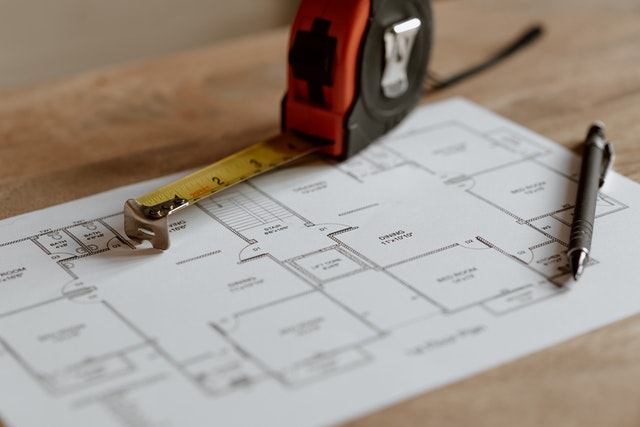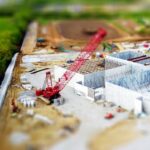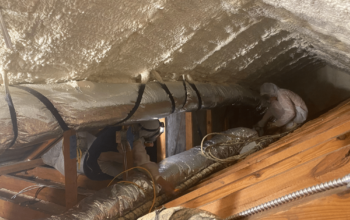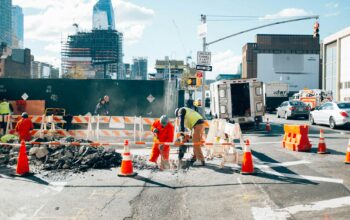No matter what type of business you run, finding ways to reduce costs and increase your profit margin is important. When you’re running a construction job site, you have to consider the cost of materials, labor, and the costs that come with the many risks present on construction sites. If you’re looking for ways to save money on your next work zone, here are eight changes you can make to reduce construction costs.
- Compare Material Costs
Material costs are a big part of construction expenses, so make sure you’re comparing the cost of materials to find the best option for your company financially. Comparing material costs is especially important for larger projects because the cost per materials makes a bigger difference when you’re buying more materials. That being said, you don’t want to go for the cheapest materials every time, so make sure you’re balancing quality and cost when comparing building materials.
- Rent Equipment
Construction equipment is expensive, especially if you’re buying the equipment you use for every project. It’s important to understand when it’s best to rent construction equipment rather than buying it. It’s typically best to rent specialty equipment that you may not use for multiple projects, but having basic equipment is never bad. If you’re having trouble reducing costs on a construction project, you can always look for rental equipment at more affordable rates.
- Buy Materials in Bulk
Speaking of materials costs, comparing different suppliers and materials to look for more affordable options isn’t the only way to save. One of the best ways to get building materials at a cheaper rate is to buy materials in bulk. Buying more materials usually means you get a lower price, and those prices continue to decrease the more you buy. Buying in bulk is an especially helpful way to save if you’re planning a large project, so make sure to look for discounts.
- Be Flexible
Flexibility is an important part of leadership and project planning in any industry, but that’s especially true in construction. When you’re planning a construction project, you need to build flexibility into that plan so you’re not in hot water if something unexpected happens. Assessing potential risks and understanding what you can do to mitigate them is an important part of project planning. You should also remember to be flexible as the project goes along, because things almost never go exactly as planned.
- Use Quality Tools
As tempting as it might be to invest in cheap hand tools, chances are you’ll end up spending more money if you buy cheap tools that break and end up having to replace them. High-quality hand tools are a lot less likely to break with regular use, so spending a little extra money on tools can actually save you money in the long run. Better tools can also help improve productivity, which means you don’t have to spend as much money on labor while people are trying to work with low-quality tools.
- Create a Productive Environment
Speaking of productivity, it’s also important to create an environment where workers feel encouraged to be productive. People are typically more productive when they’re in a good environment, so make sure everyone is treated with respect and has everything they need to work. You don’t have to create the most fun environment to make it easy for people to be productive; making sure you’ve got all the necessary tools and encouraging everyone to work together is a good start. Anything you can do to keep workers happy makes it easier for everyone to be productive.
- Focus on Efficiency
When you’re trying to save money in the business world, one of the best things you can do is look at your processes and figure out if there’s a way to make them more efficient. You might not even realize you’re doing things inefficiently, but there are plenty of little ways to save time and cut back on labor costs. Sometimes, having two people work on the same thing for an hour is better than paying one person to work for two hours. When you’re planning a project, getting your crew up to speed or bringing a new hire on, it’s important to keep efficiency in mind and make sure people know the best ways to do things.
- Use Solar-Powered Light Towers
For a lot of job sites, energy is one of the biggest costs. If you’re lucky, all you have to do is pay for electricity from the city power grid, but that’s only if you have somewhere to connect to the grid nearby. For many job sites, diesel generators are the best way to get power to the job. The problem is, diesel is expensive and keeping a diesel generator full and transporting diesel is a hassle.
Solar-powered light towers and other solar-powered construction equipment don’t need to be connected to the grid or powered by diesel, which means you save money. Trailer mounted light towers are also portable, so you can easily set them up at one job site and move them to another when you need them somewhere else.
Related Posts












